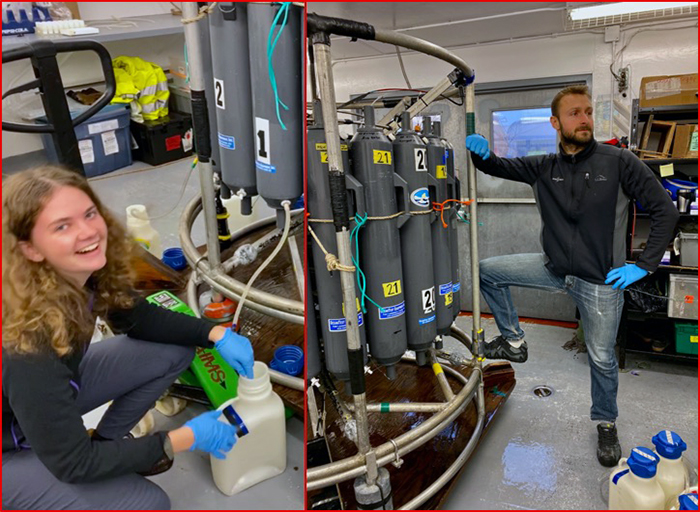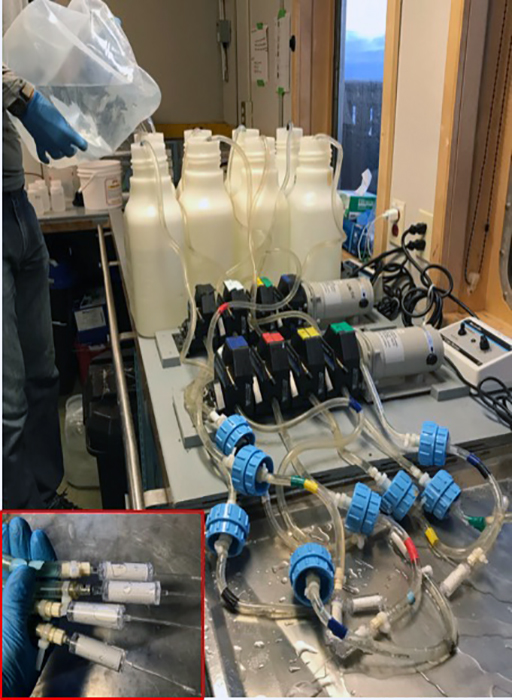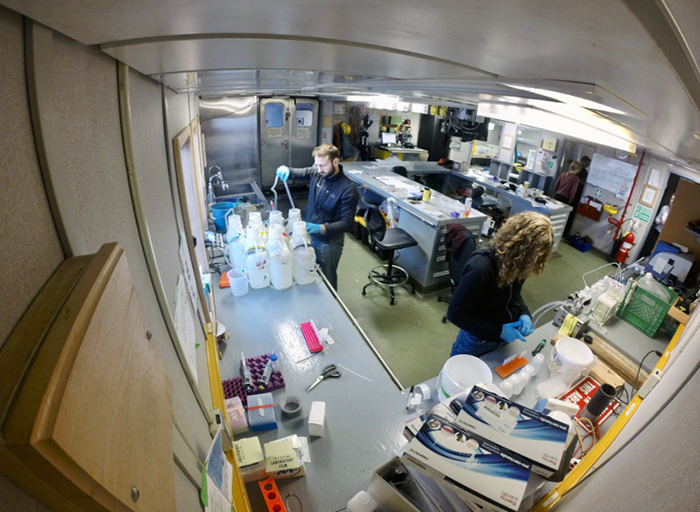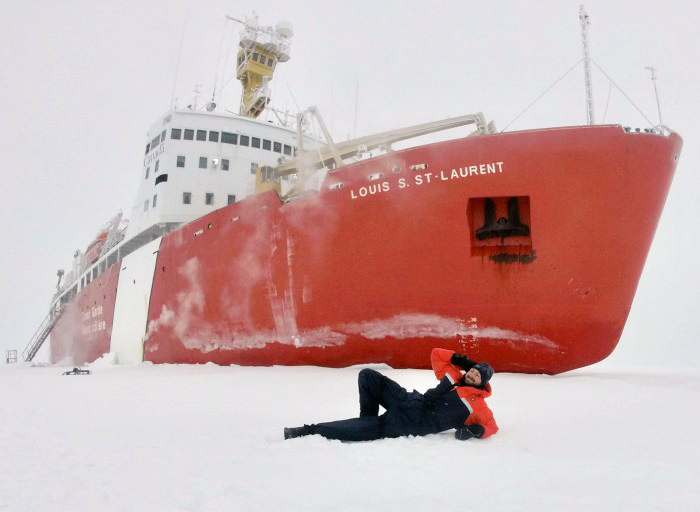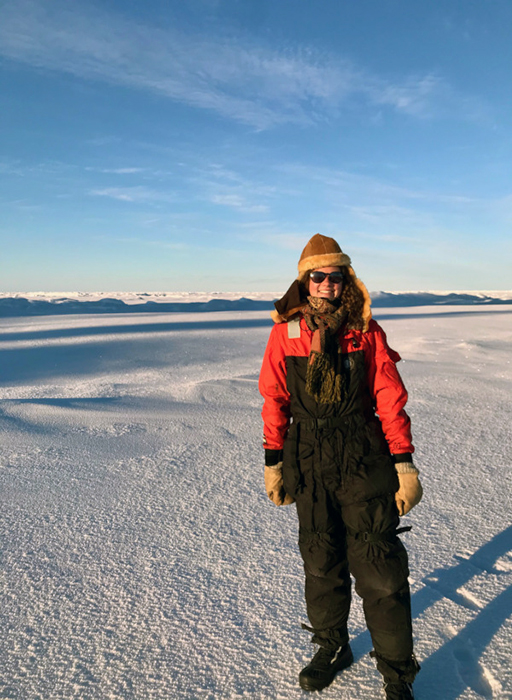Dispatch 19: A deep dive into the invisible life of the Arctic ocean
Thomas Grevesse & Susan McLatchie
September 26, 2020
I am Thomas Grevesse, PhD researcher at Concordia University in Montreal. I am teaming up with my lab mate Susan McLatchie. I am from Belgium, a country far from the Arctic, where it rains a lot and it is never too cold. Where Susan is from, on Vancouver Island, is also rainy and mild. We came all the way up to the Arctic to study the incredible diversity of life that we cannot see with the naked eye: bacteria, viruses and microscopic algae, the unrecognized rock stars of the ocean.
So why did we leave the comfort of a nice rainy and mild climate to brave the cold, frozen, windy, snowy and harsh Arctic weather just to study what we cannot even see? Glad you ask!
Microbes (the term we use for bacteria, viruses, and microscopic algae) are distant cousins of the bacteria and viruses that cause us diseases. But it does not mean that microbes in the ocean also cause disease. In fact, most of them are beneficial for marine animals, just as microbes are beneficial for us. For example, all the microbes living in our gut predigest food that we might not be able to digest otherwise. It is similar in the ocean, where microbes eat a huge variety of food, and in doing so predigest it for other living things. Notably, this includes marine algae. Marine algae are the equivalent of trees, using light to grow, and being food for larger animals (zooplankton, e.g. fish larvae). By providing the nutrients that marine algae require, microbes support the base of the food chain and are therefore required for all other organisms to live in the ocean. Even if we can’t see these tiny creatures, they are of crucial importance in the ocean. Altogether, their total biomass represents ~70% of the biomass of all the living creatures in the ocean. This is the weight of ~11 billion elephants!
The Arctic is very different than other oceans. It is cold and dark half of the year and receives a lot of freshwater. The food available for the arctic microbes is therefore very special. On one hand, they use local foods such as dead algae, other animals’ poop, or even other microbes. Let’s call this pizza. On the other hand, they also receive food from land, that comes from freshwater. Let’s call this quinoa. More and more food from land is expected to enter the ocean due to ice and permafrost thawing and increased river input. So now imagine a situation where quinoa is brought to a regular pizza party. You may wonder: Will the party-goers decide to try some quinoa, or will they stick to pizza? Maybe they’ll eat both? Will the quinoa change the structure of the pizza party? Will new guests decide to come once they find out quinoa is served? Will the regular guests decide that this party isn’t for them anymore?
When applied to marine microbes and their food sources, these are the types of questions that guide our research. Trying to answer these questions is important not only to further our understanding of the Arctic Ocean ecosystem but also to help answer other questions like what is the role of microbes in a changing climate? For example, will microbial waste stay in the ocean for a long period of time, or will it be consumed and result in CO2 production, enhancing climate change?
Before we can begin to answer these questions, we need the help of the Louis and her amazing crew to get us out, safely and very well fed to our isolated study location. Once on station, we filter water from surface to bottom of the ocean. We collect the microbes on filter with tiny holes (1000th of the diameter of a hair). Then, we look into their genetic material. This genetic material tells us two major types of information: the identity of the microbes, and their metabolic capacity, or which food they are able to eat, and how they transform this food.
Fueled by coffee and recharged by cat naps, we work around the clock, sampling stations during day and night…. because microbes never sleep!
